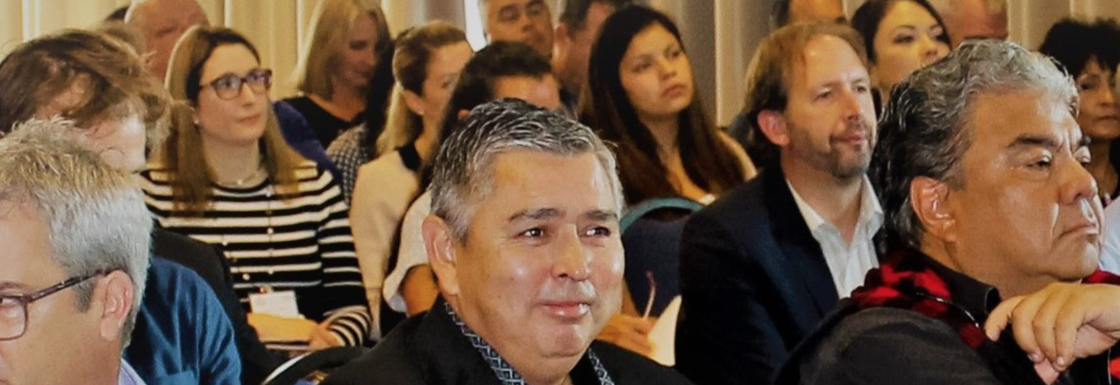Moving Investors from the Specific to the Systemic

When I was at university, I could always tell when my friend had a major essay due: her room, normally a cluttered minefield, would suddenly become spotless and meticulously organized.
She’d clean top to bottom, then bottom to top. She’d organize her books and music alphabetically, and then take them off the shelves and re-organize them by theme, style, even by the colour of the spine. And then she’d start over again.
On the surface, things looked great, but all that busy work meant she was avoiding dealing with that looming deadline.
Years later, I’m often reminded of her in my work with institutional investors.
The investment industry has been getting really good at parsing the minutiae of company or sectoral disclosure and analysis, looking for quantifiable metrics that help demonstrate our investment expertise, creating graphs and frameworks and impressive glossy reports to “wow” our clients. Yet, all I can think of is that we have a lot of really smart people ‘re-organizing their libraries’, figuratively speaking, while the big upheavals that will flunk the lot of us are left unaddressed, and the deadline to act keeps getting closer.
And that’s even true for those of us that are focused on the inclusion of environmental, social and governance (ESG) issues in the investment process.

The big headwinds that our economy faces are complex, systemic issues like deepening inequality, entrenched racism, runaway climate change and loss of biodiversity: things that ultimately require large-scale, multi-faceted solutions; things that are not solvable at an individual-asset level.
It’s not that those issues haven’t made their way into investment analysis. Thanks to decades of work by leaders in responsible investment, the integration of ESG issues into investment decision-making is mainstream, and it’s rare now to find an institution that doesn’t at least pay lip service to the idea. For the most part, they’ve been accepted because they’ve been re-defined as investment risks, and therefore material to investment revenues, and that has opened the door to a lot of excellent work to define and quantify those ESG risks as they affect particular asset classes or particular assets, and act on them as investors.
And, to be fair, there’s are even efforts to address the effects an investee company may have on the world around them – human rights or environmental impacts that are not necessarily material to the company but which are still of concern to investors because of their potential reputational or operational risk. Tackling them as systemic, public problems, and not individualized issues susceptible to private ordering is, frankly, difficult for investors.
There are three main reasons why institutional investors have such a hard time addressing systemic risks like inequality or climate change:
- Prioritizing where we invest
So much of the analytical work we do and the decisions we make are focused on where we allocate investment resources. That’s hardly surprising – constructing and managing portfolios is most of what investors do for a living. But while shifting invested resources to support the net-zero transition is critical, it is always going to be hampered by the limitations of investment analysis – that depending on time horizons, risk tolerance, diversification needs, index benchmarking and other factors, the financial viability and valuation of both climate-positive and climate-negative investments is skewed and therefore we will chronically underinvest in the solutions we need and overinvest in areas we shouldn’t. We can’t solve things like climate change by asset-allocation alone, and if that’s our only tool, we’ll miss the net-zero mark by a longshot.
- Likelyhood of underinvestment
Institutional investors and especially asset managers are likely to underinvest resources in advocacy, research or other work as long as the results of the work are not proprietary, or do not result in a competitive advantage for their firm. It’s hard to ask a for-profit enterprise to invest its own resources in developing public goods – changes that benefit everyone equally regardless of whether they’ve invested equally in them – especially if their competitors are not making similar investments. There are plenty of cases of investment managers contributing to public goods, so it’s not that this doesn’t happen, just that it may not happen at the scale needed unless we solve this dilemma.
- Different skillsets for different tasks
The third challenge is that public advocacy, systemic research, building coalitions and networks, writing and lobbying all require particular skill sets and those are not necessarily the same skills that investors and managers have developed. Again, this is not a slight on those highly-skilled managers. You don’t ask a farmer to fly a helicopter, or a pilot to grow crops. But this mismatch of skills means that even if you want to invest in systemic change, it can be hard to be effective at tackling issues more broadly when it is outside your team’s experience and training.

None of these reasons, however, are permanent barriers to action on systemic risks. Acknowledging our challenges is not the same as admitting defeat. Rather it’s a call for creativity and ingenuity, and one thing I know the institutional investor world has in spades is ingenuity.
To start, here are three ways we can help to clear the hurdles and increase investor attention and action on systemic risks:
- Expand our understanding of our responsibilities and accountability as investors
It has been a long haul to get ESG issues widely accepted as a relevant investment consideration within the constraints of fiduciary duty, but we’re there (for the most part). Now we have to refine that understanding so that we have the analysis and tools available to incorporate systems analysis in our work. One of my favourite contributions to this changing mindset is a report SHARE issued last year written by Shayla Praud and Dr. John Borrows documenting Indigenous legal views on fiduciary duty. This is a profound re-evaluation of how investors can interpret value and wealth in an investment portfolio and should be required reading for any investment committee or trustee board.
- Deepen investor accountability for investment outcomes
The concept that investors bear responsibility for the real-world outcomes of their investments is not new. It is already encapsulated in the United Nations Guiding Principles for Business & Human Rights and has been the subject of OECD guidance and National Contact Point decisions which have reiterated the responsibility. While the expectations on an investment institution vary depending on their connection to the outcome and their relative influence, embedding accountability into our systems – both private and legal – will force investors outside of the boundaries of individual company materiality and into an engagement with the world in which those investments take place. I say both private and legal-asset owners can increasingly demand accountability from their managers even in the absence of supporting regulations – and in fact we’ve been doing exactly that through initiatives like the Committee on Workers’ Capital’s Asset Manager Accountability Initiative – but we can also look to regulatory solutions that embed due diligence responsibilities or an expanded duty of care on the private sector.
- Creating potential for collective and collaborative action
This is big. This is how we get past those last two challenges. By building coalitions with other investors and with other private sector, civil society and governmental actors, we both share the cost of investing in public goods and bring together complementary expertise and skills that any one party may lack on their own. No one needs to go it alone, and we will go farther and faster together.
The best news is that this is happening already: At SHARE, I’ve had the privilege of developing coalitions of institutional investors that collectively lobby to embed climate change and anti-racism responsibilities in the very rules governing capital markets. I get to work with coalitions of companies willing to support human rights due diligence legislation, and Indigenous-led environmental protection. I co-chair an international coalition of investors dedicated to addressing the devastating effects of the opioid epidemic by challenging investee pharmaceutical company practices. And we’ve built a broad Canadian initiative with Indigenous leaders and investors to build the Indigenous economy and bring Indigenous values and leadership into the mainstream financial world.
I’ve seen firsthand that overcoming these challenges can be done. If we’re going to do it at scale and on the tight deadlines our natural and social world imposes on us, we’ll have to let our dorm rooms stay a bit messy and get focused on the real work at hand.















